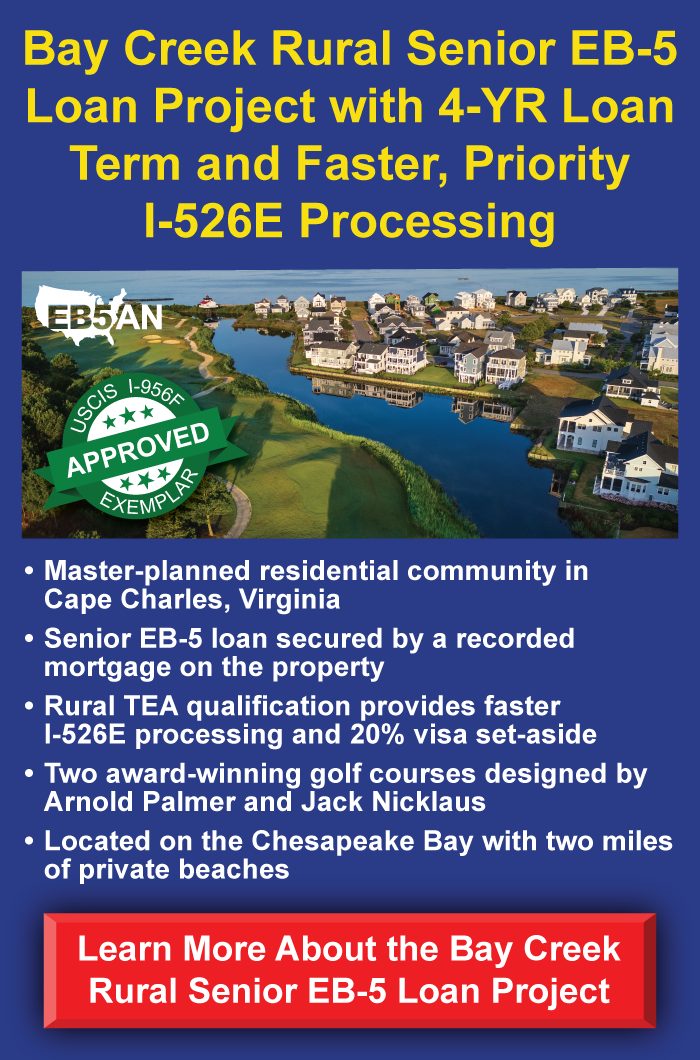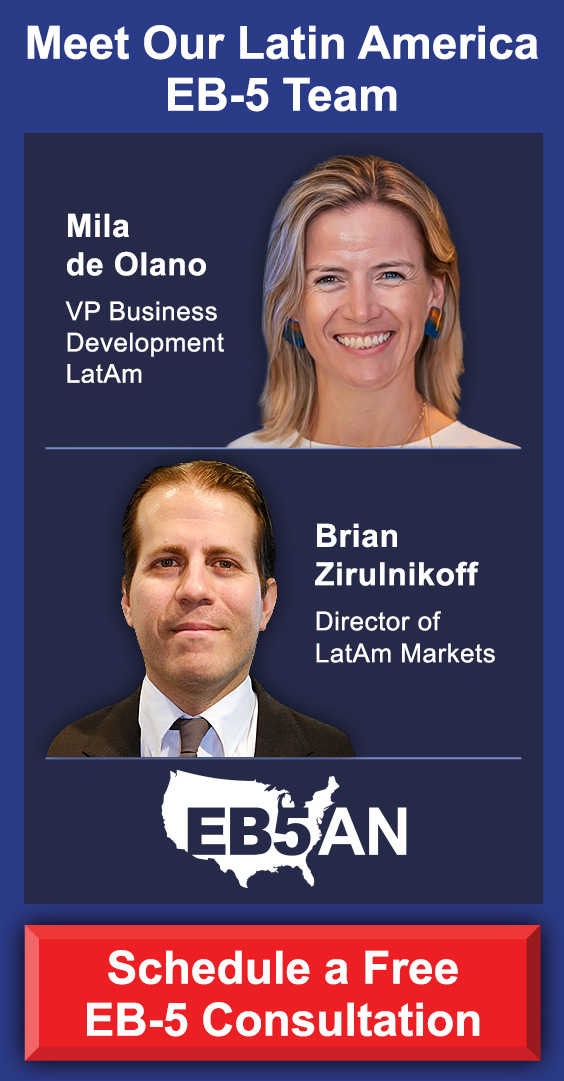Many countries offer investor visa programs aimed at attracting capital to stimulate their economies. Examples of such programs include Europe’s golden visas and Canada’s investor programs. These programs typically focus on capital infusion, offering residency or citizenship in exchange for significant financial investments.
One of the most unique and impactful investor visa programs is the U.S. EB-5 Immigrant Investor Program. Unlike many other similar programs, the EB-5 visa not only requires a substantial financial commitment but also mandates the creation of jobs within the U.S. economy.
This article explores how this job creation requirement is central to the success of the EB-5 program and how it plays a pivotal role in strengthening the U.S. economy, distinguishing it from many other global investor visas.
The Importance of Job Creation in EB-5
EB-5 vs. Europe’s Golden Visas and Canada’s Investor Programs
Job Creation and the U.S. Economy
EB-5 vs. the E-2 Visa
The EB-5 Program Helps Create Jobs
The Importance of Job Creation in EB-5
The EB-5 program was established in 1990 to stimulate the U.S. economy through foreign investment while also creating jobs for U.S. workers.
To qualify for an EB-5 visa, investors must contribute a minimum of $1,050,000—or $800,000 if investing in a targeted employment area (TEA)—into a U.S. new commercial enterprise that will create at least 10 full-time jobs for U.S. workers within two years of the investment being deployed.
By linking the issuance of Green Cards to the creation of jobs, the EB-5 program ensures that investments provide tangible benefits to the U.S. economy beyond just an influx of capital. The creation of jobs not only helps reduce unemployment but also contributes to the overall economic growth of the country.
This aspect of the EB-5 program stands in stark contrast to many other investment visa programs around the world, which tend to focus primarily on capital infusion. These programs do not mandate job creation as a condition for residency or citizenship.
While such investments can boost local economies, they do not have the same direct impact on job growth that the EB-5 program requires.
EB-5 vs. Europe’s Golden Visas and Canada’s Investor Programs
European golden visas, such as those offered by Portugal, Spain, and Greece, are designed to attract foreign capital through real estate purchases, business investments, or other economic contributions.
These visas typically grant residence permits to investors who meet the financial thresholds, but they do not require job creation as a condition for eligibility.
As a result, while these programs have been successful in attracting wealthy individuals and fostering economic growth through capital infusion, they do not generate the same level of direct employment benefits for local workers as the EB-5 program.
Similarly, Canada’s investor programs offer Canadian permanent residency in exchange for significant financial investments, typically in the form of passive investment funds or business ventures.
Like Europe’s golden visas, Canada’s programs focus on capital inflow rather than job creation, and while they help stimulate the economy, they do not provide the same direct benefits in terms of employment.
The lack of a job creation requirement in these programs contrasts sharply with EB-5, which seeks to engage investors in the economic health of the U.S. by creating sustainable, long-term jobs.
Job Creation and the U.S. Economy
The job creation requirement in the EB-5 program is crucial for several reasons.
First, it directly benefits U.S. workers by creating new employment opportunities.
Many EB-5 investors choose to invest in projects that are designed to employ a substantial number of U.S. workers. These projects can range from building luxury hotels to developing housing. In essence, the job creation requirement incentivizes investors to engage in projects that have a measurable impact on employment.
Additionally, the EB-5 program is often seen as a tool for revitalizing economically distressed areas. The TEA designation, which lowers the minimum investment threshold and, for rural projects, offers priority processing, encourages foreign investors to focus on areas that may be struggling with high unemployment or economic stagnation. By channeling investments into these regions, the EB-5 program helps create jobs and foster economic development in parts of the country that may otherwise be overlooked.
Moreover, job creation through EB-5 investments also has a multiplier effect on the economy.
As new businesses grow and hire employees, the demand for goods and services increases, which in turn stimulates further economic activity. For example, when a new housing community opens due to EB-5 funding, it not only provides direct jobs but also increases demand for suppliers, contractors, and service providers, further strengthening the economy.
Critically, by investing through a regional center, EB-5 investors can take advantage of these indirect and induced jobs to meet the program’s requirements.
EB-5 vs. the E-2 Visa
While the EB-5 program focuses on large-scale investments that create jobs for U.S. workers, another investor visa option, the E-2 visa, offers a different approach to investment-based immigration.
The E-2 visa allows foreign nationals from treaty countries to invest in and manage a U.S. business. To qualify for an E-2 visa, investors must demonstrate that they have made a substantial investment in a U.S. business and are actively involved in the business’s operations.
Crucially, the E-2 visa does not grant a Green Card or permanent residency status. Instead, it provides a temporary status that must be renewed as long as the business remains operational.
Additionally, while the E-2 visa may lead to job creation, there is no specific requirement to create a set number of jobs, making it less impactful in terms of direct employment generation.
In contrast, the EB-5 visa’s job creation mandate not only strengthens the U.S. economy but also provides a direct route to permanent residency, making it a more attractive option for those seeking a path to citizenship.
In sum, while the E-2 visa offers flexibility and potentially lower investment thresholds, the EB-5 visa is better suited for investors who are looking to make a significant impact on the U.S. economy and secure permanent residency for themselves and their families.
The EB-5 Program Helps Create Jobs
The job creation requirement is one of the key features that sets the EB-5 program apart from many other global investment visa programs.
By linking residency to job creation, the U.S. government ensures that EB-5 investors contribute not only to the economy by contributing investment funds but also by directly supporting employment and economic growth. Combined with its emphasis on struggling areas through the TEA designation, this foundation makes the EB-5 program a unique tool for strengthening the U.S. labor market and local economies.
Indeed, a recent report has shown that, between 2016 and 2019 alone, the EB-5 program added an estimated $184 billion to the U.S. economy and created or supported 7 million U.S. jobs, with the average investor contributing to 45 of these jobs.
Another major advantage of the EB-5 program is the potential for investors to recoup their capital if the chosen project performs successfully. Unlike many other investor visa programs—where the investment is treated more like a sunk cost—the EB-5 structure often allows for the return of funds after the required investment period.
So, for investors who want to make a meaningful impact on the U.S. economy while securing permanent residency—and the potential return of their investment—the EB-5 program remains the most compelling option. Reaching out to experienced industry professionals is the best place to start.
EB5AN has helped more than 2,700 families from 70+ countries relocate to the United States as lawful permanent residents. Our expert team has more than a decade of experience, and we offer our clients first-rate, low-risk EB-5 regional center projects with a 100% USCIS project approval rate.
If you would like to know more about your EB-5 investment options, book a free call with our expert team today.










